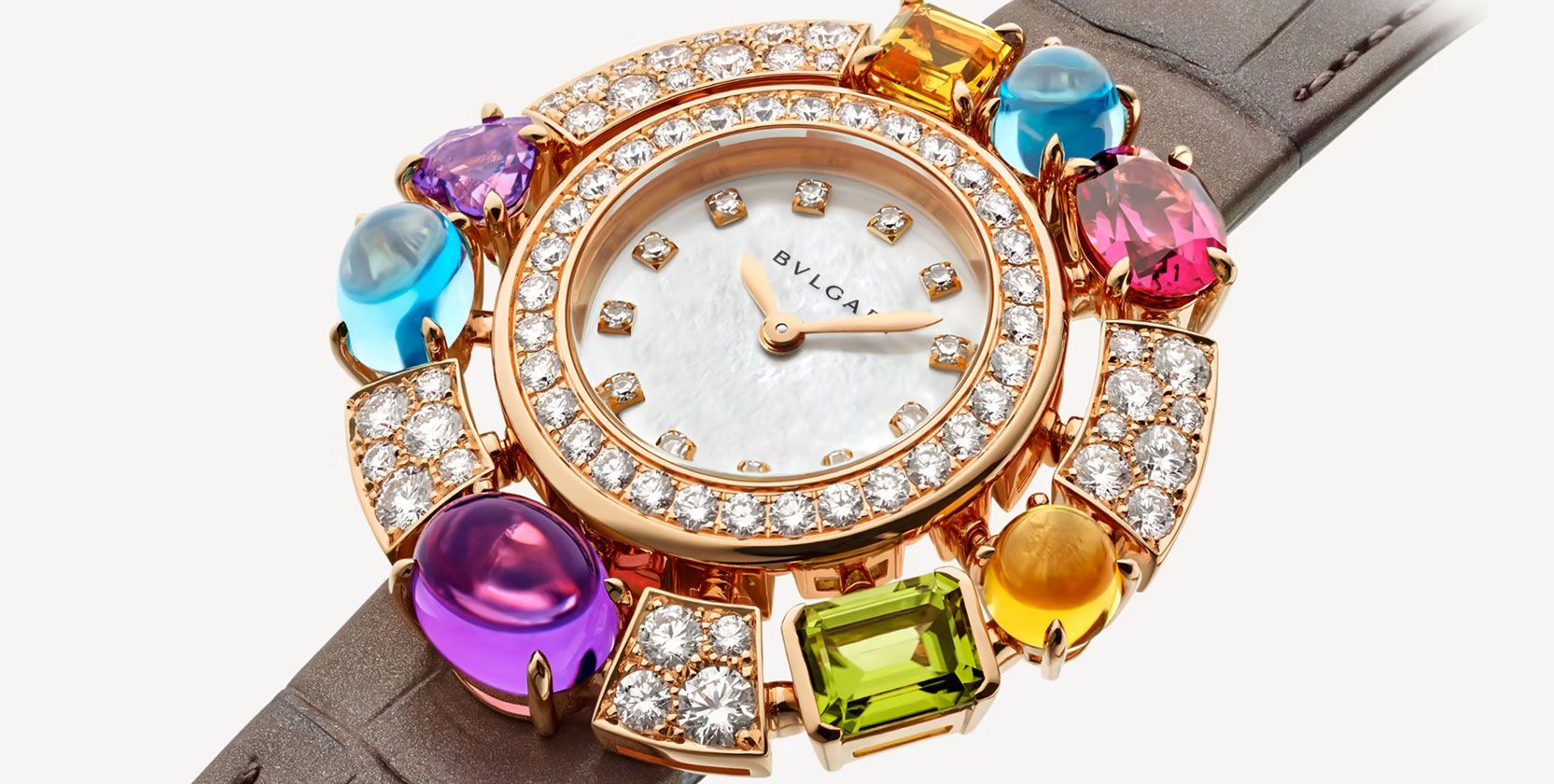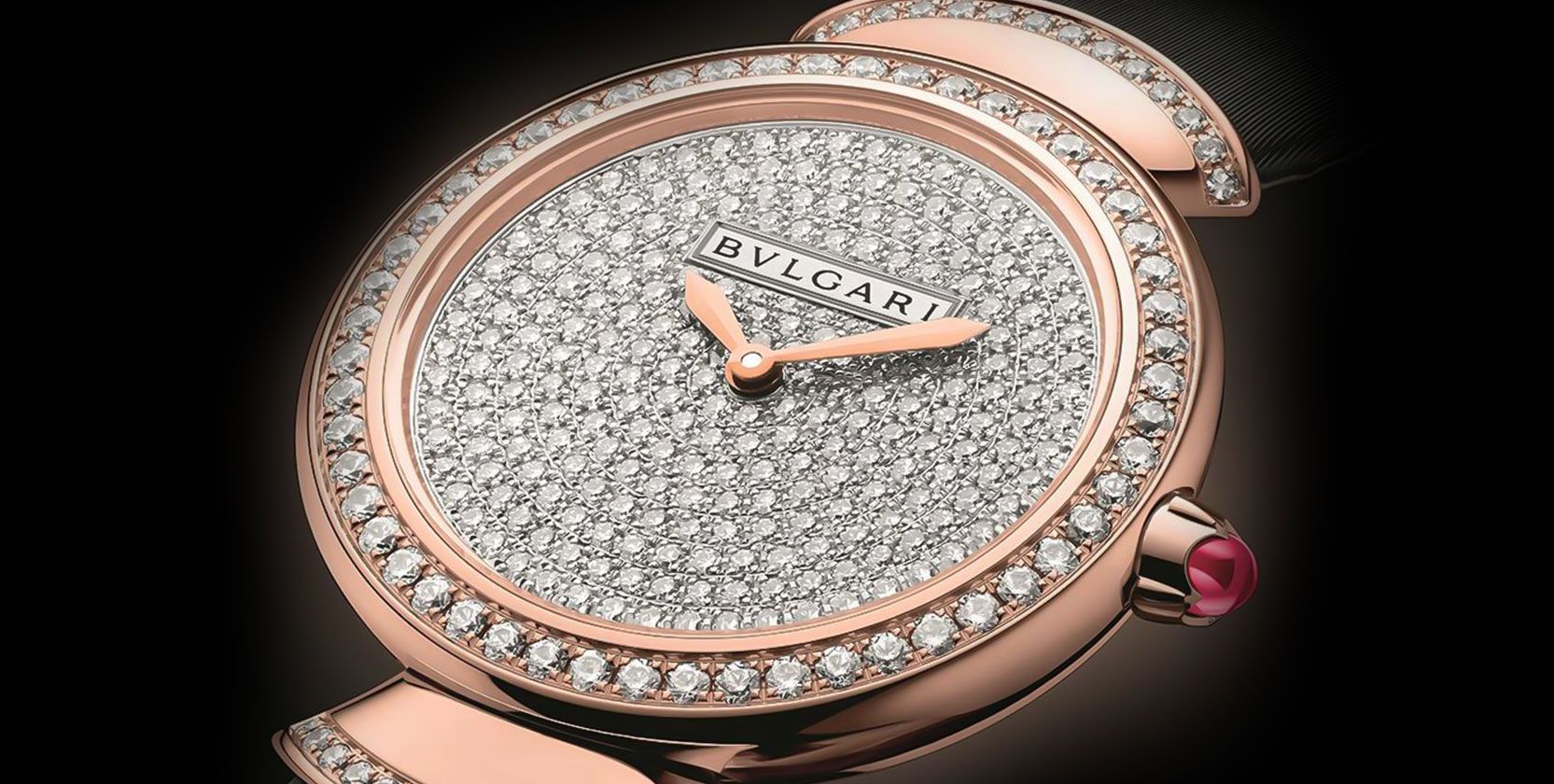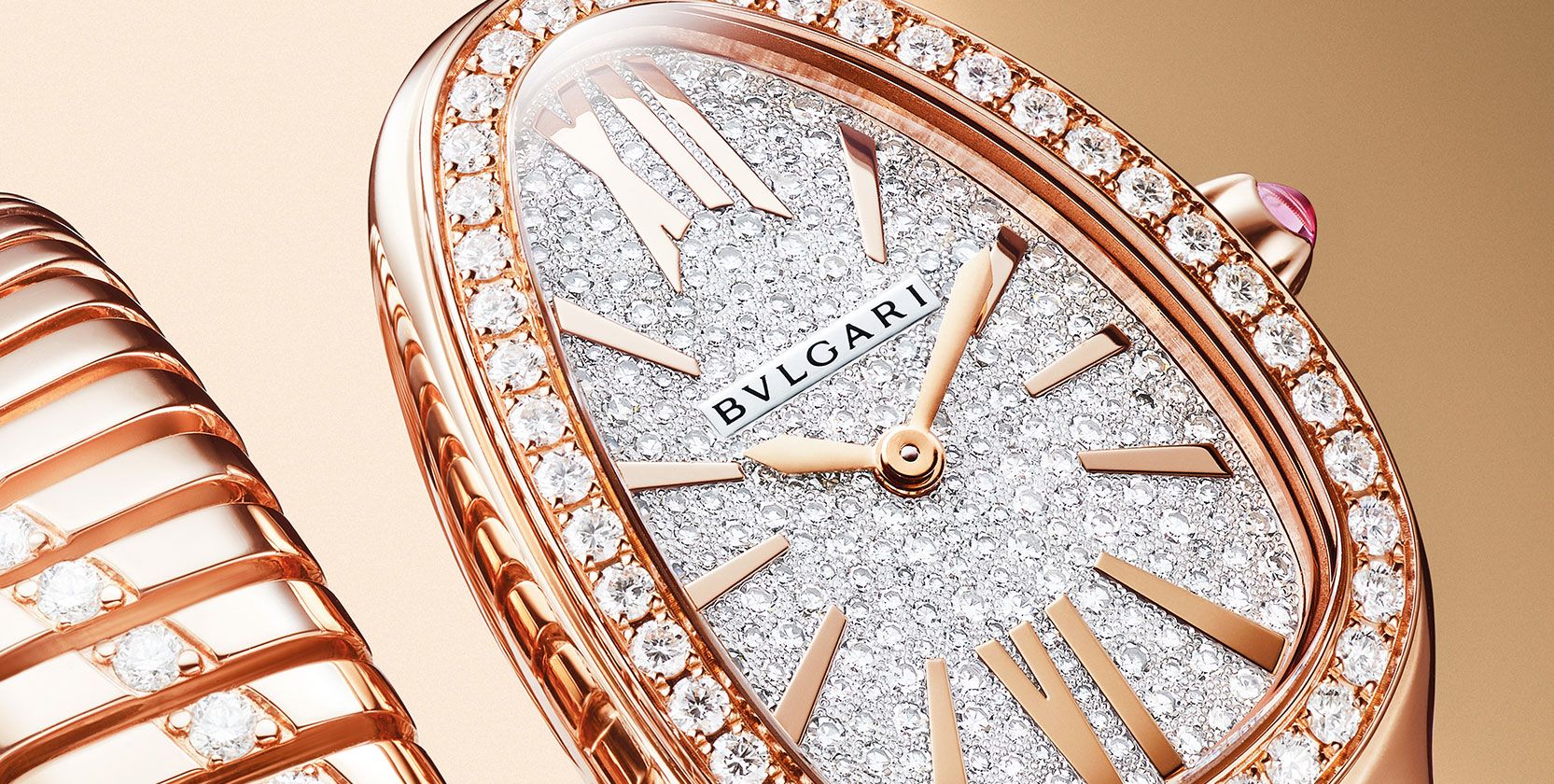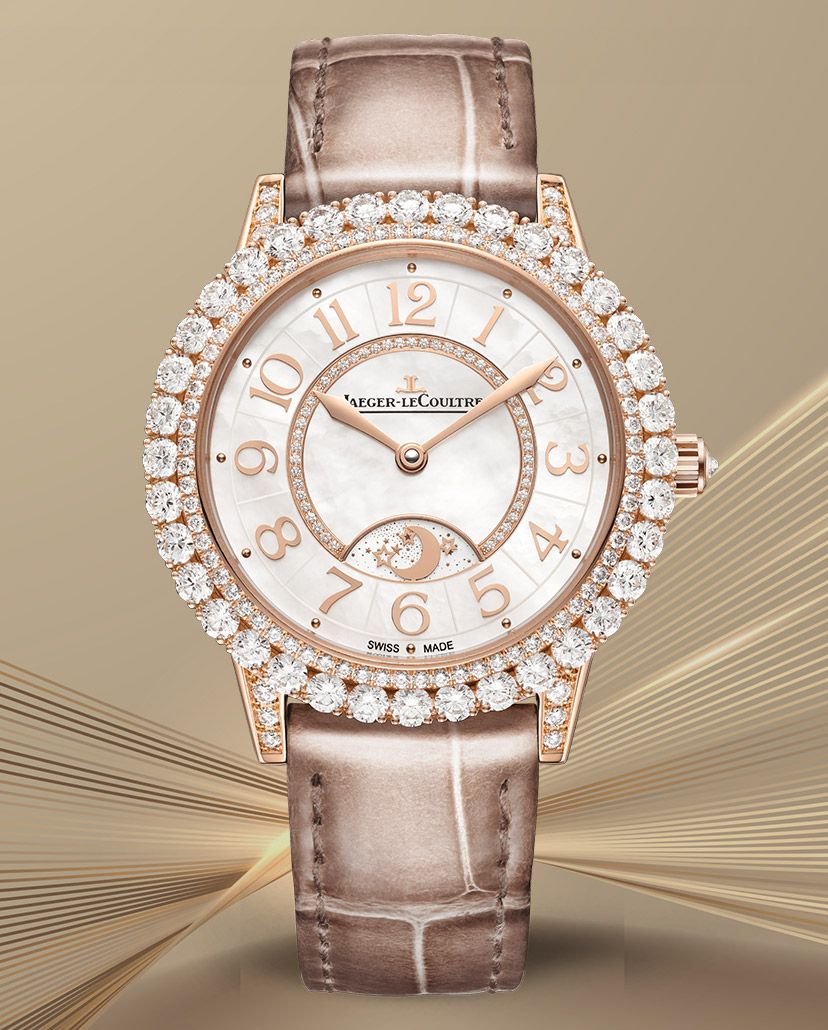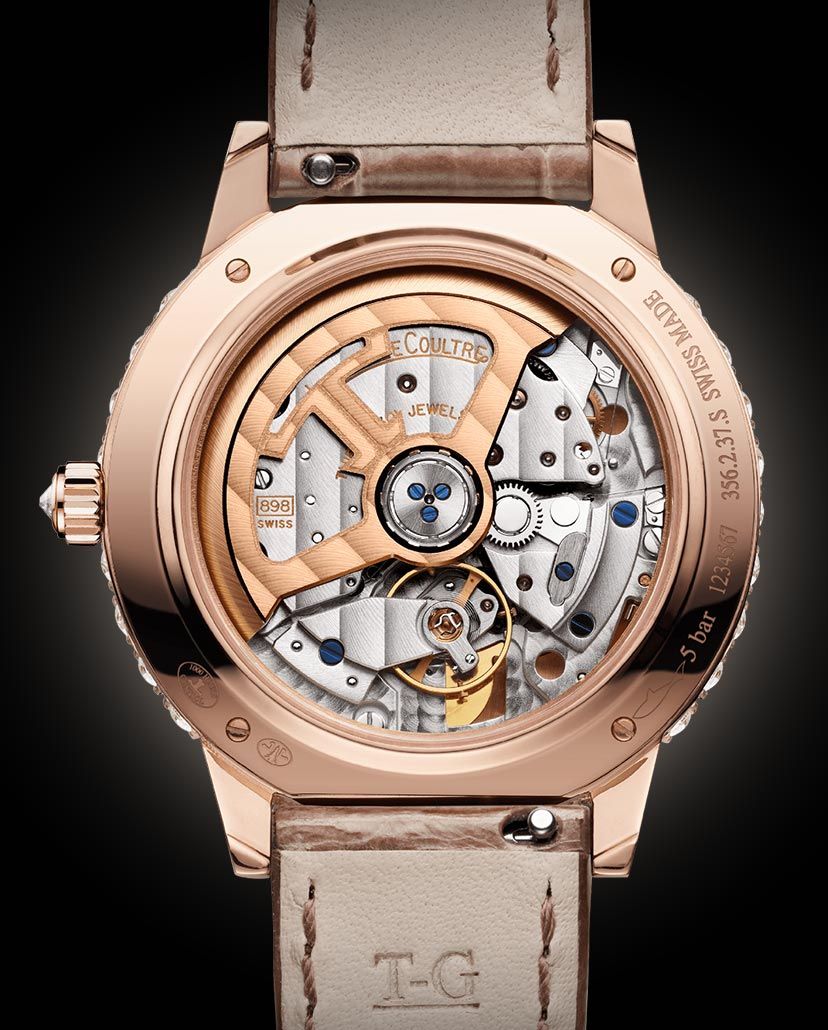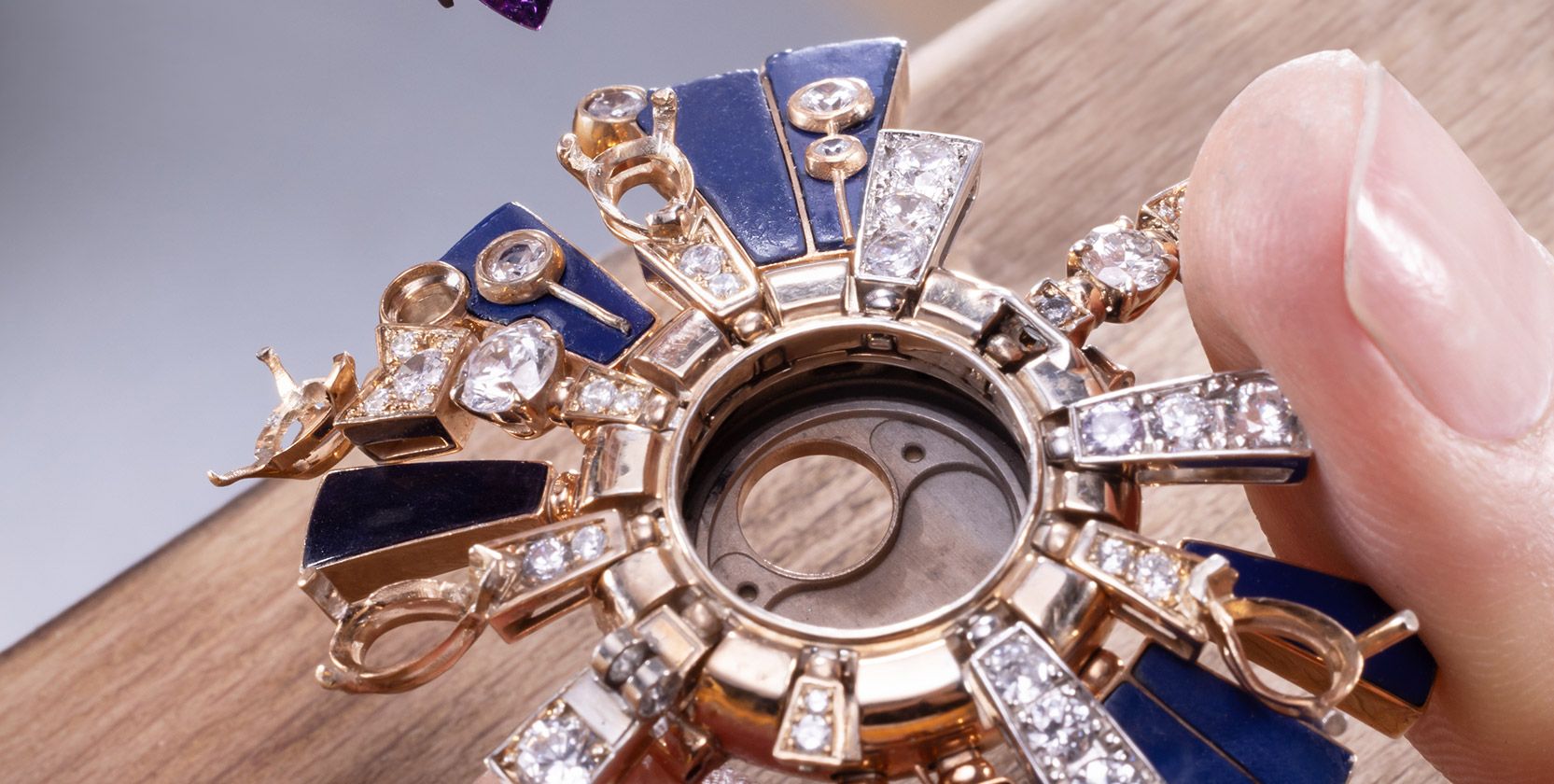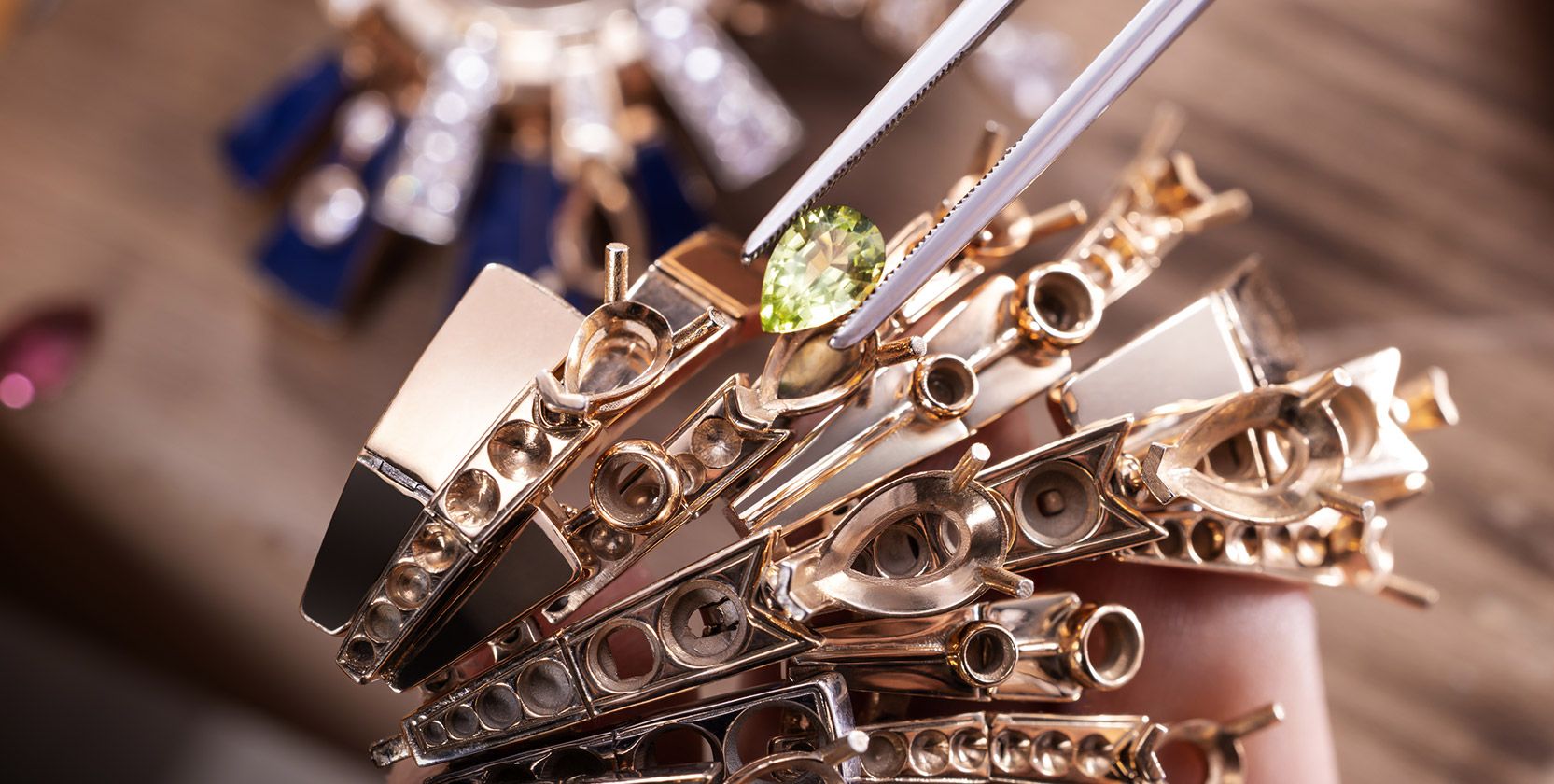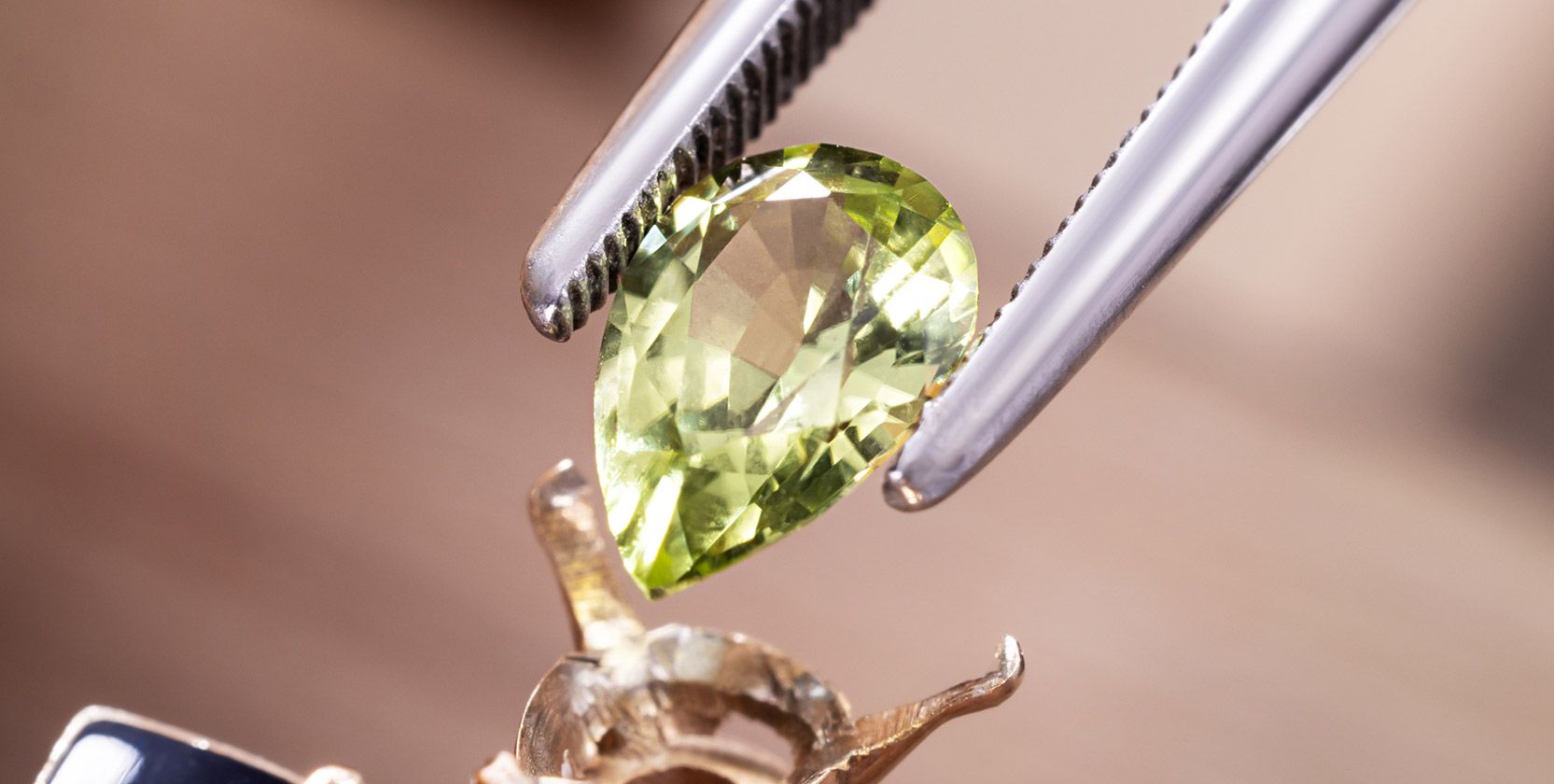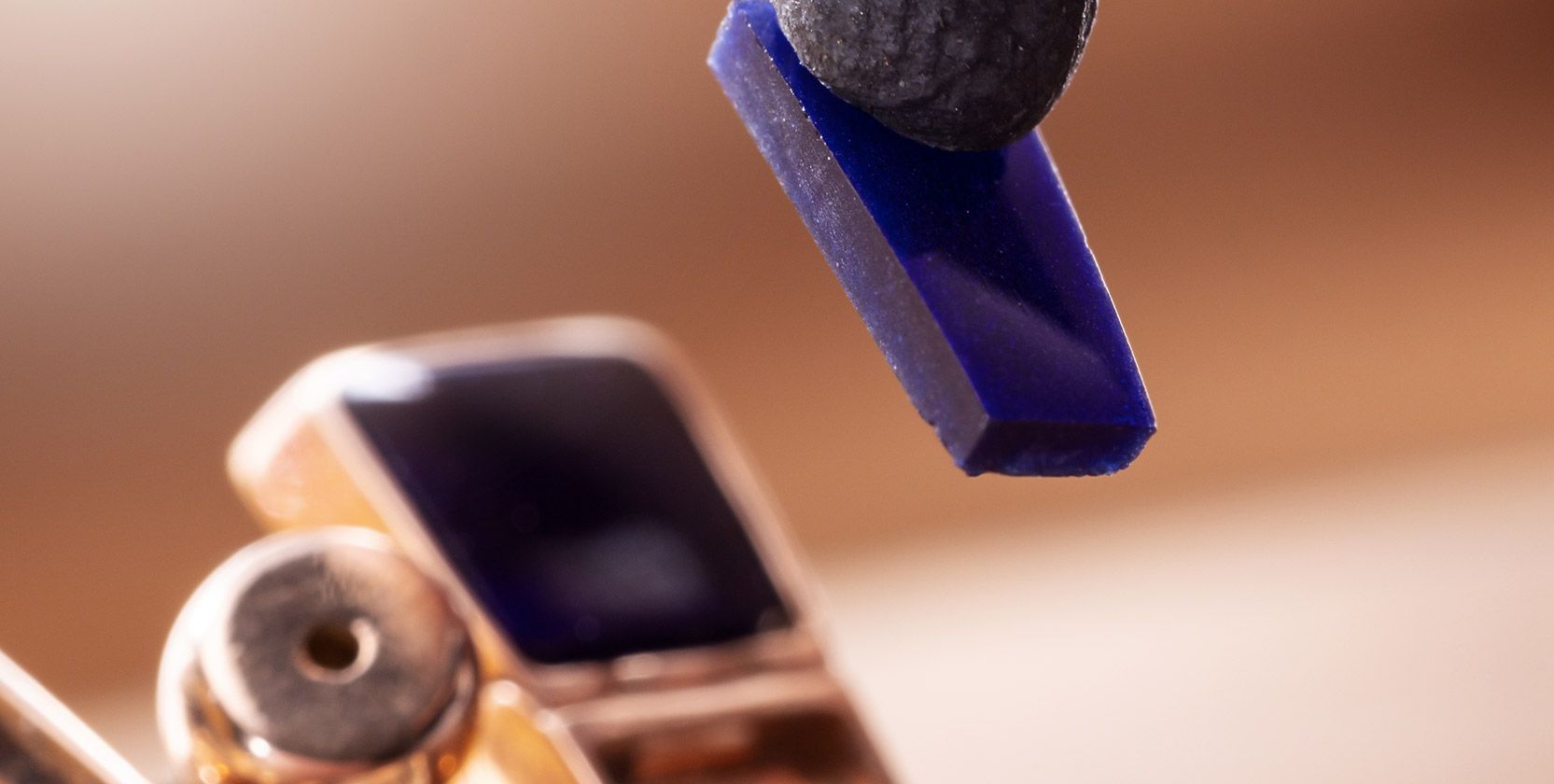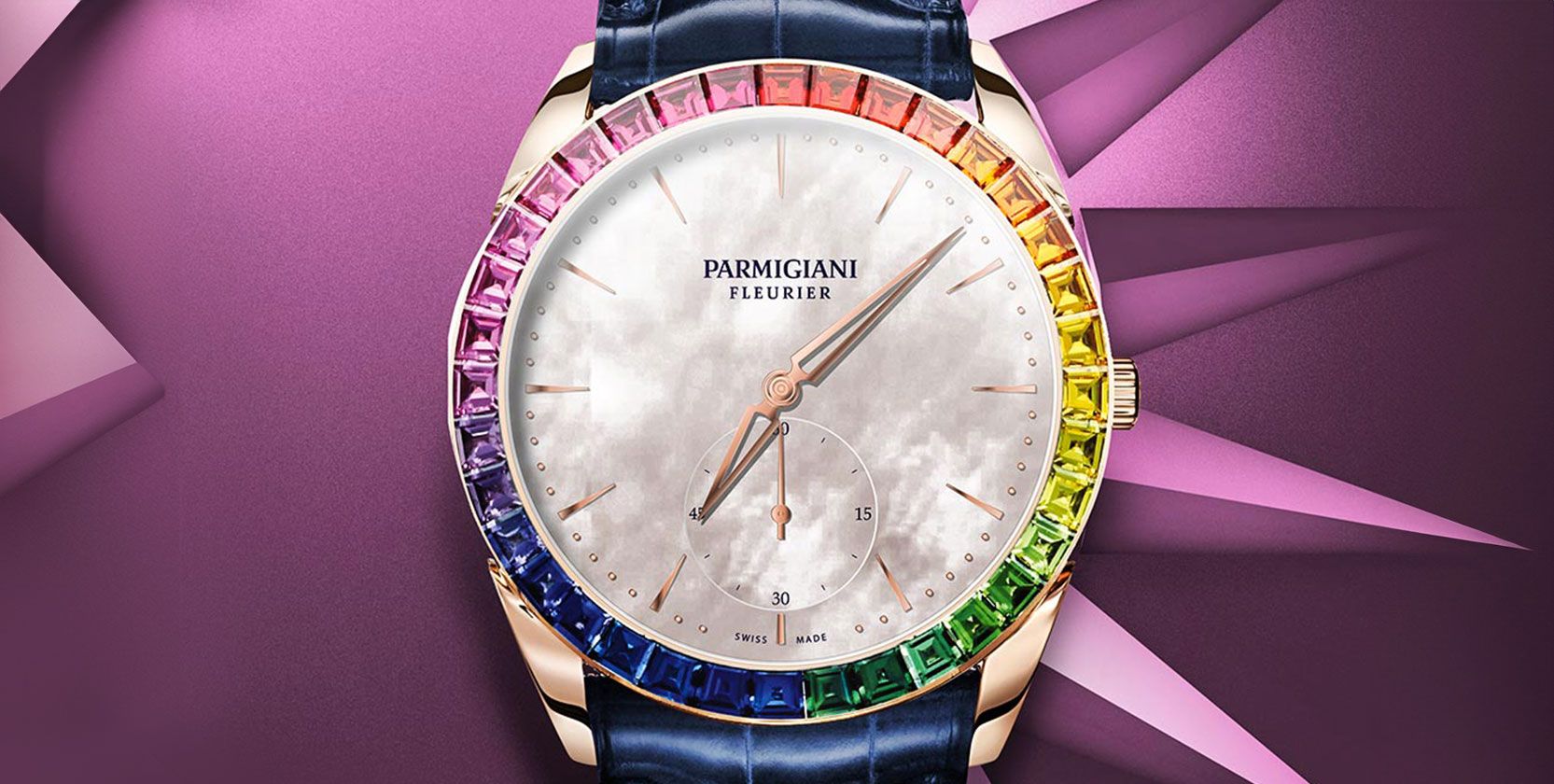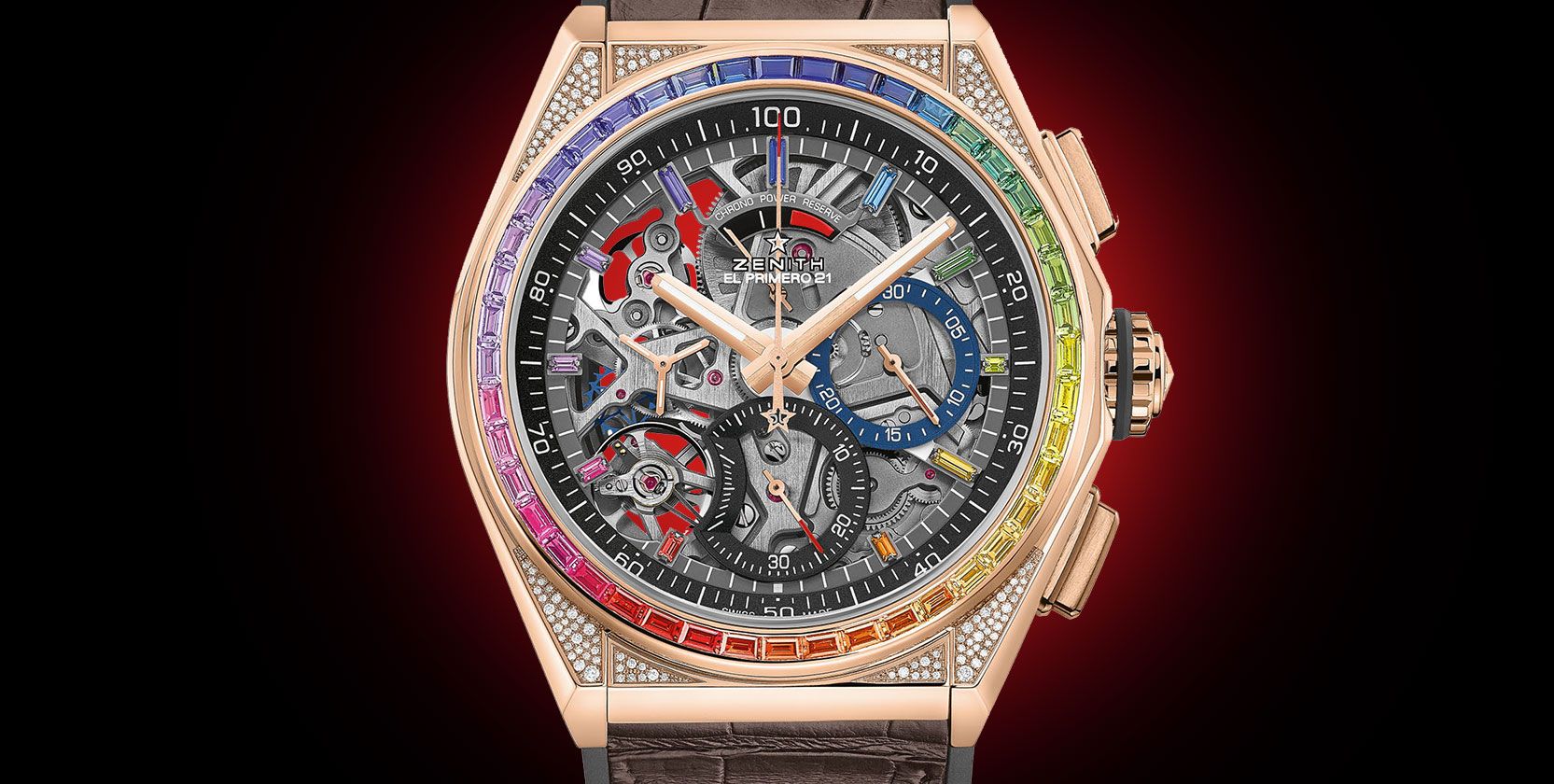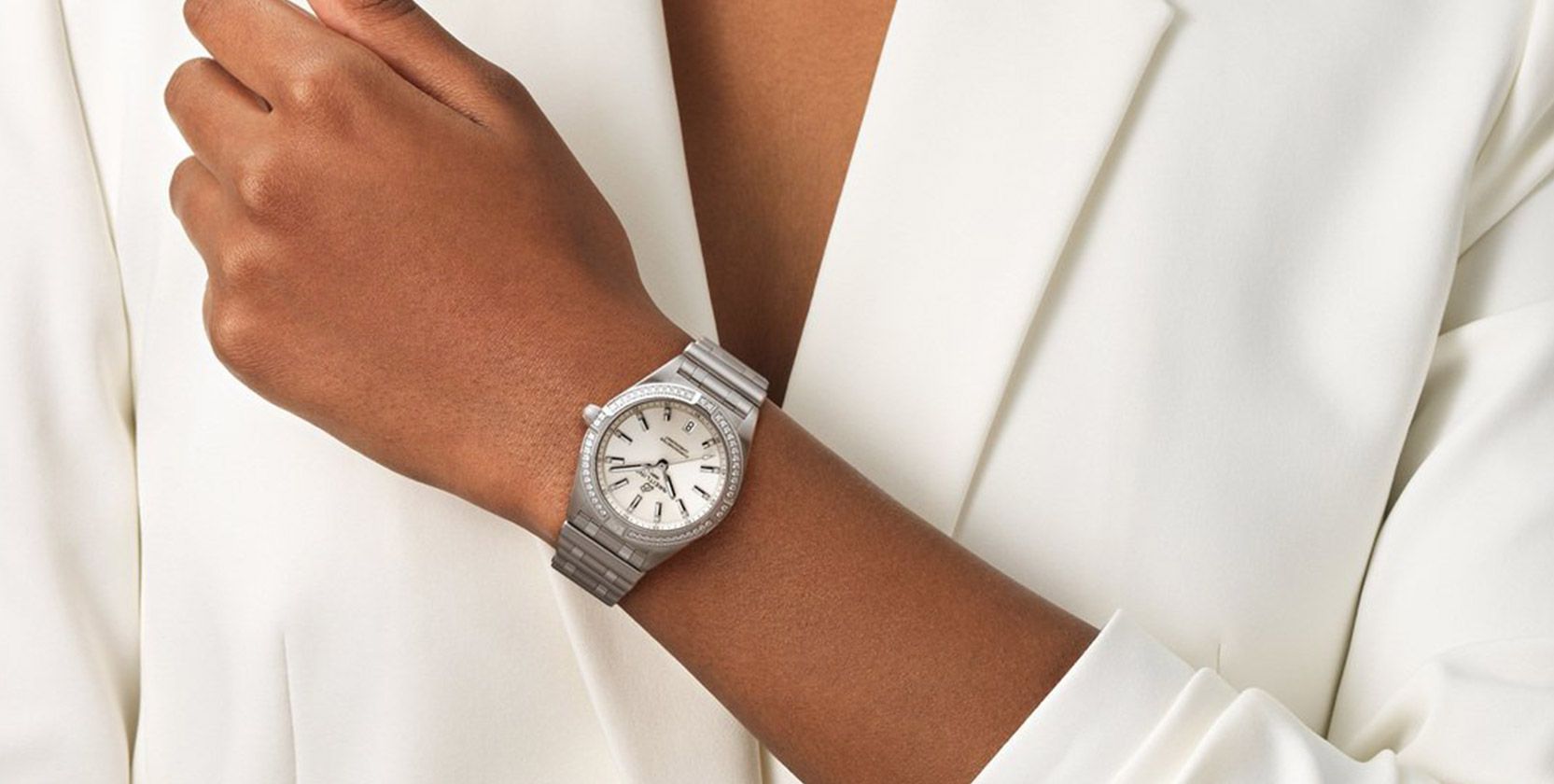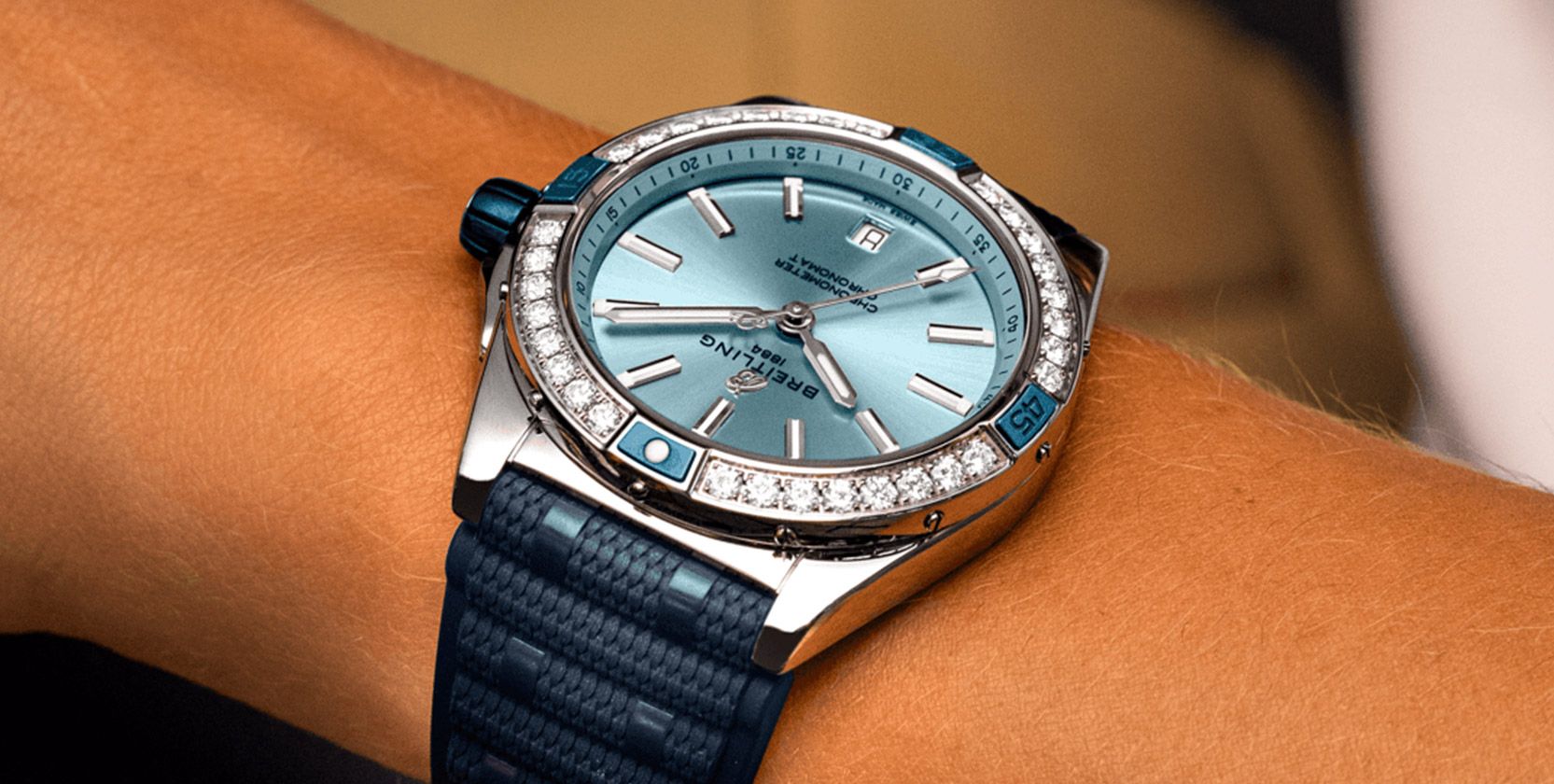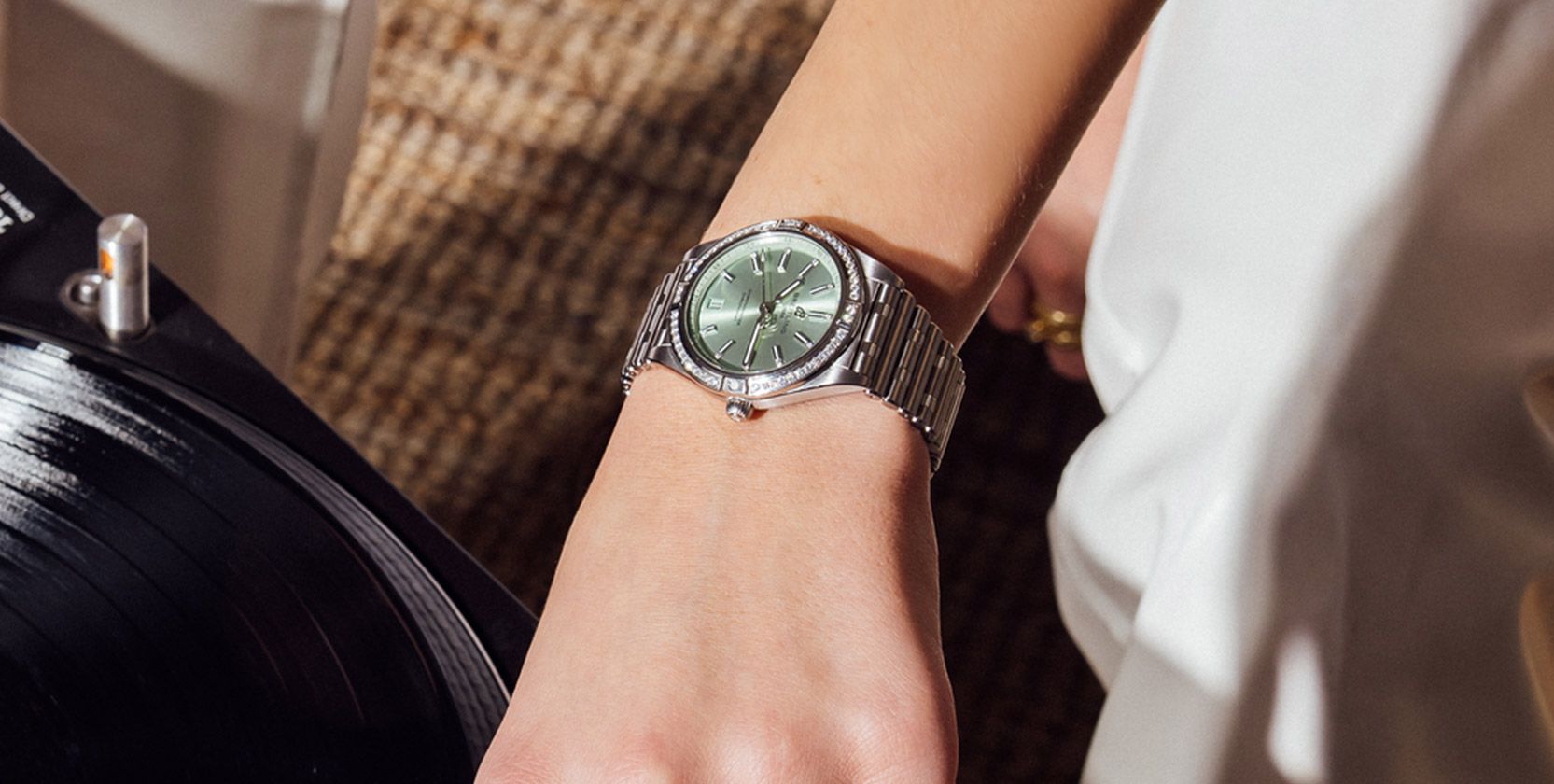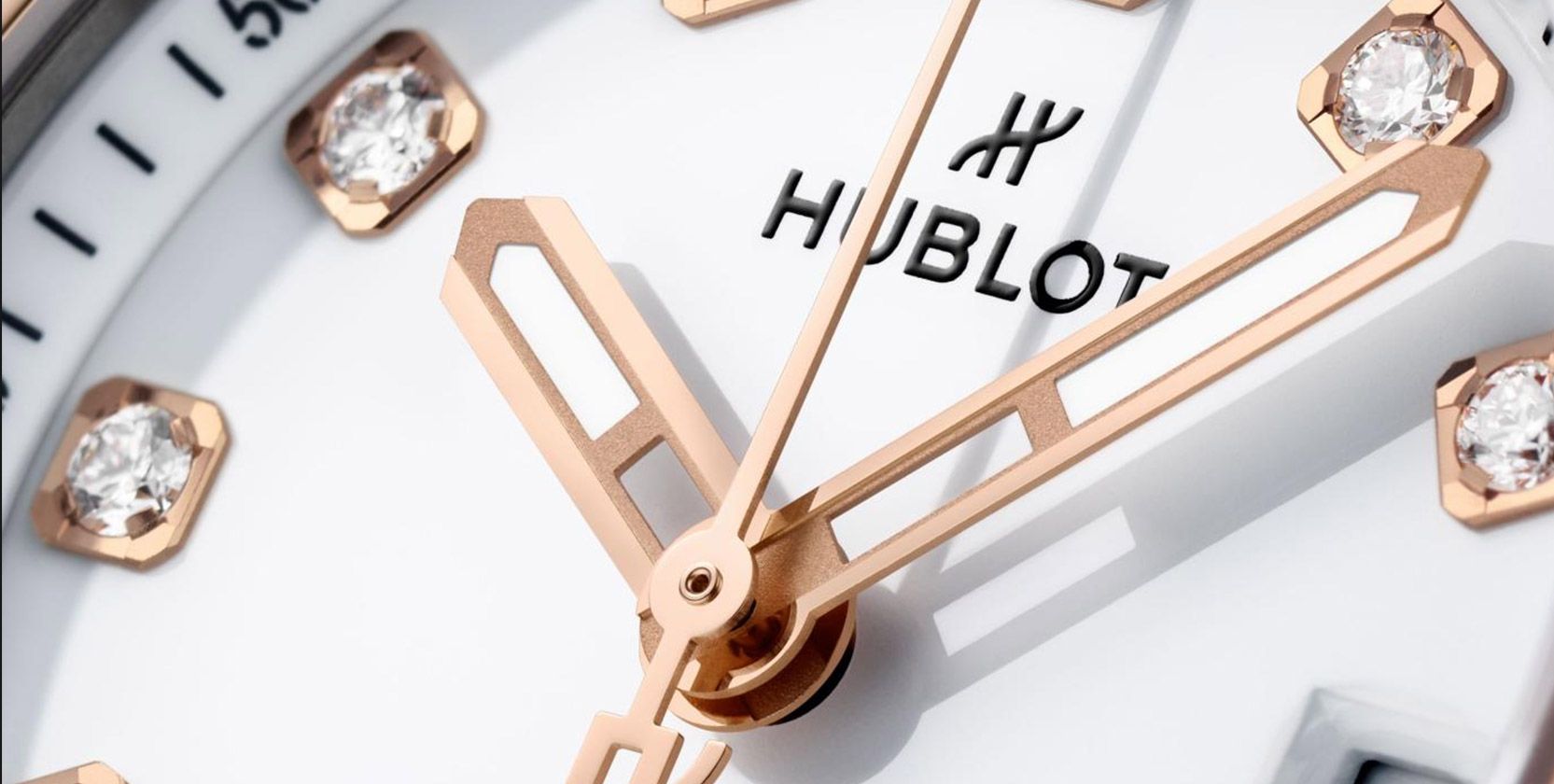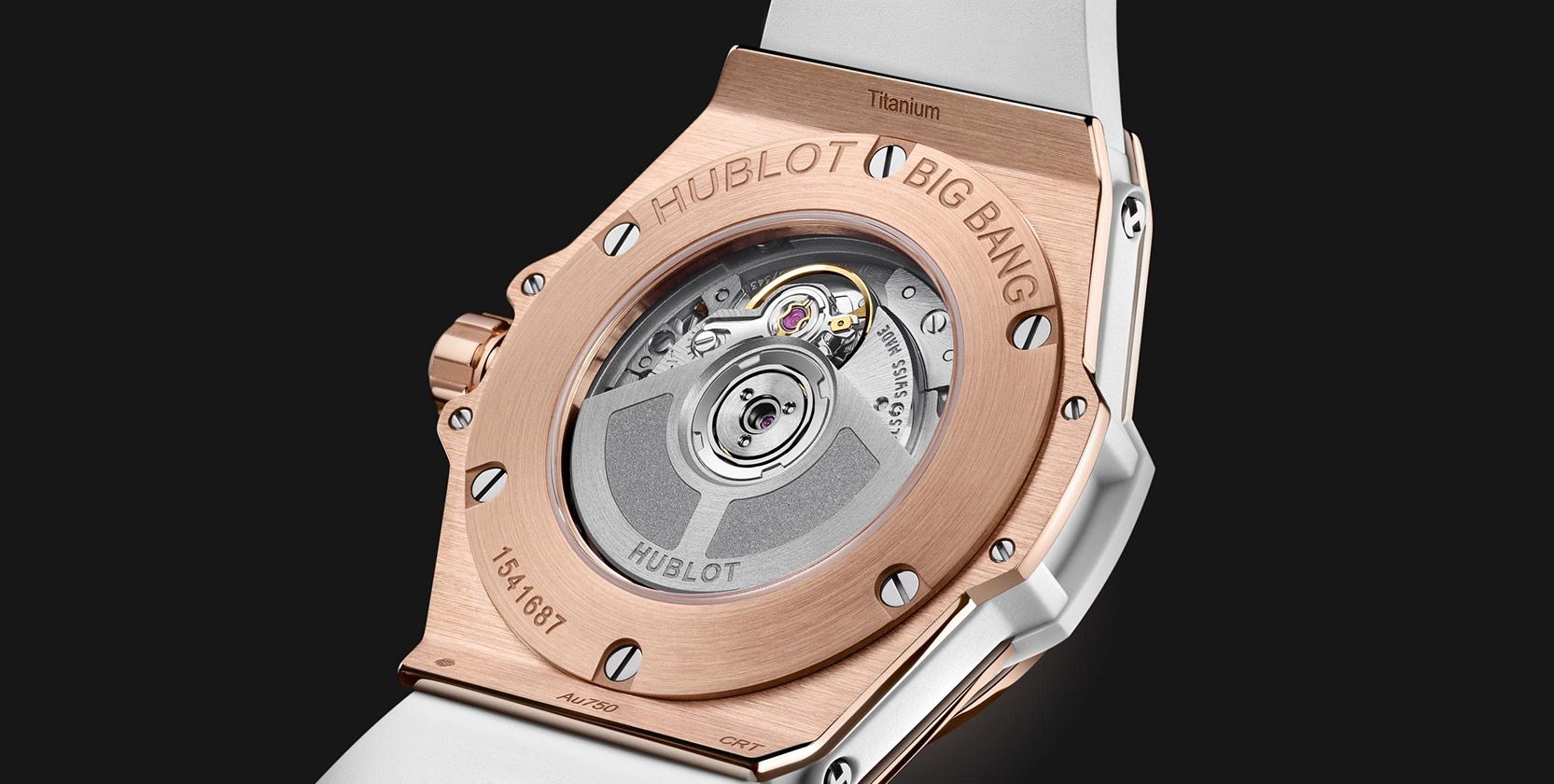FeatureThe Sparkling Aura Of Jewelled Watches And Their Prominence In Today’s Time
Glamorous with a disruptive design ethos, jewelled watches are admired globally for their aesthetic appeal and the value they bring to the wearer. Initially designed for women alone—with less focus on the accuracy of time—they have come a long way, occupying a large space in an otherwise competitive market. Here’s a complete guide to jewelled watches, and their pathbreaking journey in horology
May We Recommend
At the recently concluded charity event and fundraiser for The Metropolitan Museum of Art’s Costume Institute—the Met Gala—also dubbed as ‘fashion’s biggest night out’, celebrities came dressed to the nines aligning with the dress code of the year—The Garden Of Time. From elaborate gowns to structured suits, they were seen in every creative costume imaginable, doing justice to the theme, ‘Sleeping Beauties: Reawakening Fashion’. The floral and faunal appliquéd ensembles were a dominant sight, assisted with dramatic accessories—larger-than-life hats or headgears, intricate gloves, diamond and precious stone-studded jewellery, and luxurious watches.

As ostentatious the garments, it comes as no surprise that the watches worn by the celebs were quite a sight to behold. However, there was a common thread that unified these timekeepers under the distinct category of gem-set and jewelled watches; in most cases complementing the jewellery donned by them. Some noteworthy watches spotted were on actor Steven Yeun, who wore a gold ornamental Cartier Clash [Un]limited; singer-songwriter, Usher, who was seen flaunting an extravagant Jacob & Co Billionaire III Rubies, adorned with 714 pink rubies, while the other striking Jacob & Co models were seen on filmmaker and actor, Taika Waititi, and singer and musician, Raúl Alejandro, wearing a diamond paved Royal Tourbillon and a Boutique watch, respectively. Some of the other celebrities who wore jewelled watches are actor Alexandra Daddario in a TAG Heuer Aquaracer Quartz; singer Troye Sivan in a Hublot Big Bang Original Steel Diamonds 38mm; talk show host and comedian, Jimmy Fallon in a resplendent Omega Speedmaster 38 with diamonds on the bezel; actor Jeff Goldblum in a dainty Tiffany & Co Cocktail 2-Hand; actor Chris Hemsworth in a Chopard Alpine Eagle; and rapper Lil Nas X in a vintage Piaget white gold timepiece with a malachite dial from the 1970s.
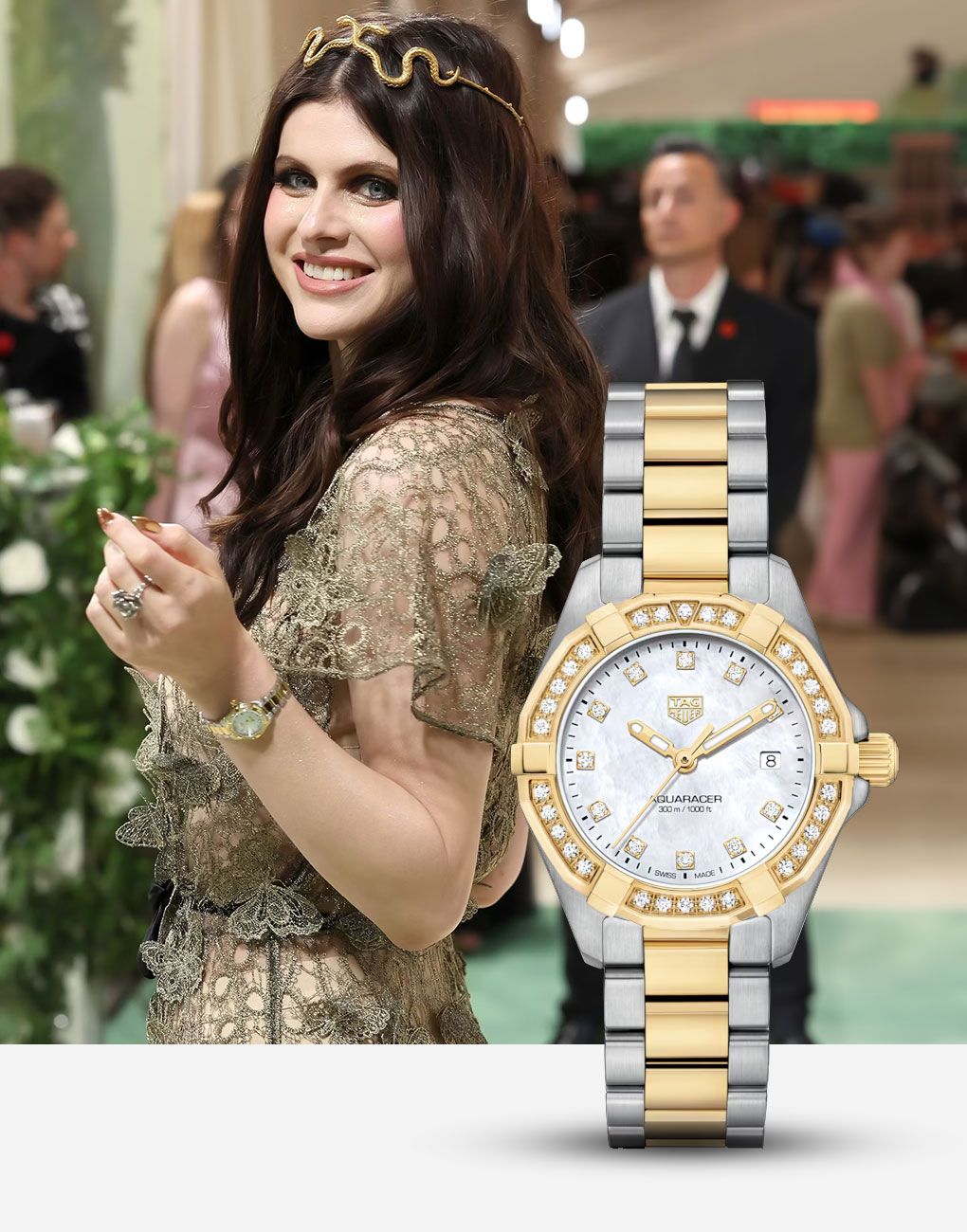
The 2024 Met Gala was not the only event where jewelled watches were seen aplenty. At this year’s Watches and Wonders in Geneva, many esteemed brands launched timepieces that were not only a brilliant spectacle of different gem-setting techniques but also a fine example of haute horlogerie—both intertwined. The Reflection de Cartier collection by Cartier, Chopard’s Alpine Eagle 41 XP Frozen Summit inspired by frost-flecked glaciers, Bobbin Cuff Couture by Chanel, and Van Cleef & Arpels’ Lady Arpels Nuit Enchantée, are just a few examples, among others, where high-jewellery met the art of watchmaking effortlessly. Also, among watch necklaces, Vacheron Constantin’s Grand Lady Kalla and Piaget’s Swinging Sautoir, grabbed the limelight for their stunning appearance. Interestingly, the rise in popularity of jewelled watches isn’t necessarily a new phenomenon. In fact, since the inception of the watchmaking industry, precious stones have often accompanied horologists to birth some of history’s most iconic creations. Let’s get to know more about them.
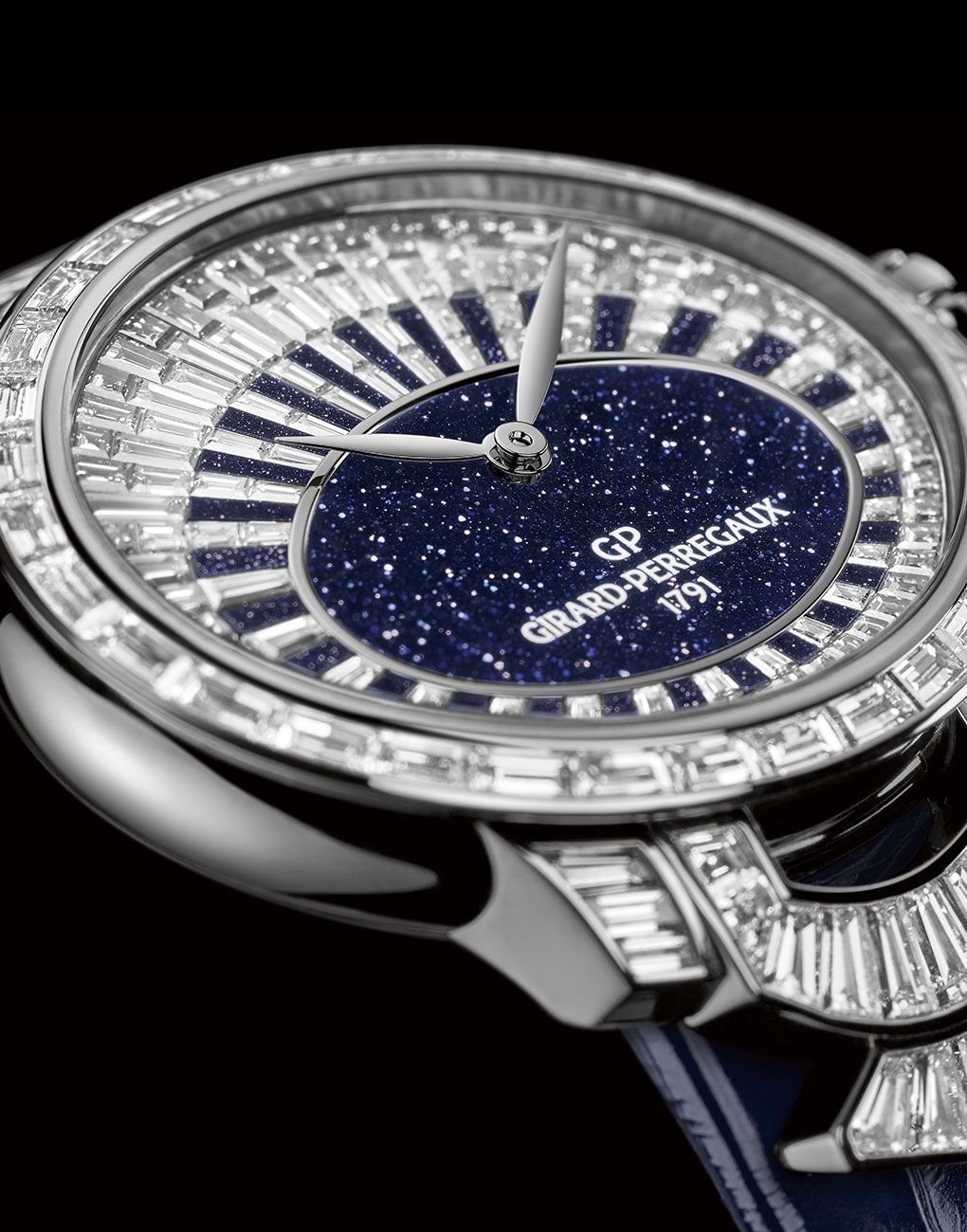
Jewelled Watches: When And How It All Began
One might think that the first wristwatch was created for a king or the military folk with a robust design and functional attributes, however, as per history, it was Queen Elizabeth I, who owned the first wristwatch (read armlet) in 1571. Given to her as a gift by the then Earl of Leicester, Robert Dudley, it was a round bracelet clock charm, embellished with precious stones. Although it was high on aesthetic appeal, it lacked the precise time-telling function, like many other bracelet watches of that time. Another notable example is of the French watchmaker, Abraham Louis Breguet. In 1810, on the commissioning of Caroline Murat, the Queen of Naples—sister of the then French emperor, Napoleon—Breguet created an oval repeater placed on a bracelet. Also, in 1868, the Swiss watchmaker Patek Phillippe manufactured their first key-winding bracelet watch—the No. 27368, for the Countess Koscowicz of Hungary. These events set the ball rolling for the creation of enthralling gem-set pieces and by the early 20th century, jewelled watches were no longer confined to royals alone as they began occupying space among the larger audience.
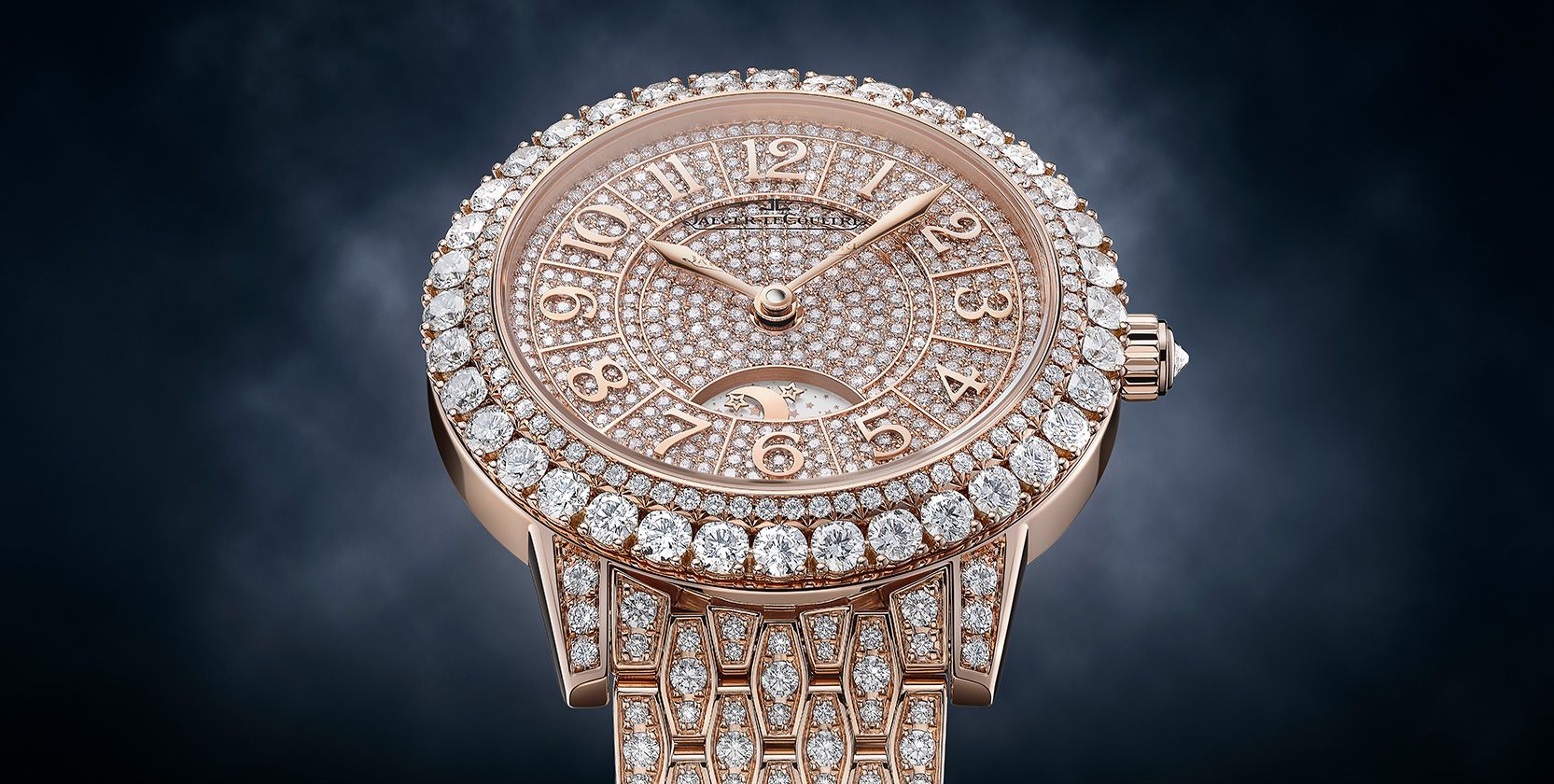
Some of the other noted watch brands that spearheaded the rise of jewelled timepieces are Cartier and Jaeger-LeCoultre. From introducing new shapes and designs to slimmer cases and smaller movements, these companies were monumental in taking jewelled watches to the next level, just like in 1910, Jaeger-LeCoultre launched their first women’s pocket watch with a complication—a fully gem-set minute repeater. Other luxury houses to jump on the bandwagon were Vacheron Constantin, Van Cleef & Arpels, Piaget, Chopard, and Harry Winston to name a few. Soon enough, gem-set models also began housing complications, enhancing their functional value as well.

Fast forward to the present day and jewelled watches no longer serve the purpose of a fashion accessory alone. They have evolved into fine models, equipped with quartz or mechanical movements, adorning the wrists of both women and men. Want to know the players leading the way? Read on.
Leaders Of Today In The High-Jewellery Watch Segment
One of the contemporary names that comes to mind instantly while thinking of jewelled watches is the Italian luxury house, Bulgari. Their Serpenti collection, along with Allegra and Divas’ Dream, house some of the most exquisite jewelled watches in the industry. Launched in the 1940s by the founder, Sotirios Boulgaris, using the complex Tubogas technology, their Serpenti (an Italian word for snakes) models are especially popular among celebs and watch enthusiasts alike. On the other hand, their Allegra collection—an assortment of cocktail watches—is the perfect marriage of diamonds and precious stones. Here is the sparkling Bulgari Allegra quartz watch, featuring 82 round brilliant-cut diamonds, two mixed-cut citrines, one fancy-cut peridot, two cabochon-cut blue topaz, one fancy-cut rhodolite, and mixed-cut amethysts fixed over an 18-karat gold case. It also features a mother-of-pearl dial and a brown leather strap. Lastly, Bulgari’s high-jewellery line, Divas’ Dream takes its inspiration from the Roman Caracalla baths with patterned mosaic floors. To showcase their expertise in haute horlogerie, they launched Divas’ Dream Finissima Mosaic Watch in 2018, to celebrate their 100th anniversary. The world’s thinnest minute repeater to be ever created for women, it features baguette-cut diamonds, and is driven by the record-breaking in-house calibre BVL362.
Jaeger-LeCoultre’s spectacular Rendez-Vous collection launched in 2012, as an alternative to their iconic line—the Reverso—is another stellar example of jewelled watches featuring handcrafted dials and diamonds, powered by mechanical movements. While their Rendez-Vous Jewellery series is equipped with diamonds and other precious stones, their Dazzling series comes with two distinct diamond-studded bezels. Similarly, Hublot’s Big Bang, Omega’s Constellation and De Ville, Girard-Perregaux’s Cat’s Eye, Bovet’s Fleurier, and Carl F. Bucherer’s Pathos are all great examples of jewelled watch collections.
Where High-Jewellery Meets Poetic Complications
Automata is another category that enjoys a rich heritage in the watchmaking industry and the contemporary creations inspired by these legendary mechanical marvels of the early 18th century are extremely ornate and high on visual appeal. Pioneering this segment is Jaquet Droz—a name that instantly comes to mind, when one talks about automata. Back in the day, the Swiss watchmaker mastered the art of developing these futuristic devices that were often presented in the royal courts. And with constant innovation, the brand successfully implemented this mechanism in a wristwatch with the launch of the Bird Repeater in 2012. Six years later, the La Chaux-de-Fonds based watchmaker introduced the remarkable Parrot Repeater Pocket Watch to celebrate their 280th anniversary. The model consists of 69 jewels—diamonds, rubies, pink sapphires—fixed on an 18-karat red-gold case, and depicts an animated scene featuring a pair of macaws watching over their two chicks, while the third one hatches from the egg.
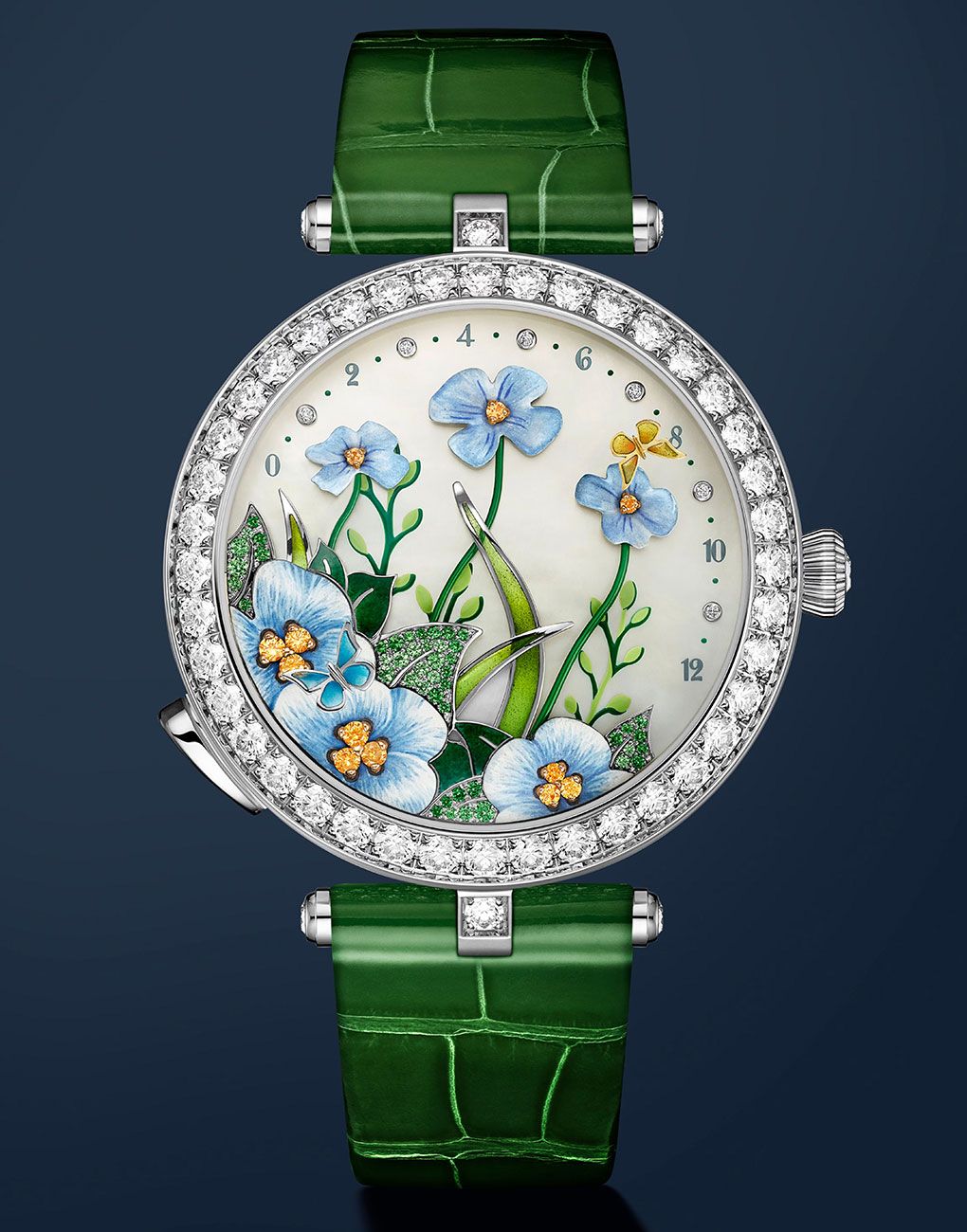
Another brand, known for developing these exquisite creations is Van Cleef & Arpels, building up on their mastery of haute joaillerie. One such fine example is the Lady Arpels Papillon Automate–a combination of divine beauty and mechanical excellence–launched in 2017. It features an animated butterfly on the dial using the minute repeater function, placed within a 40mm diamond-studded white-gold case. Its blue alligator strap is enhanced with a white-gold pin buckle, set with diamonds, and is run through a complicated mechanical calibre.
Elements That Constitute A Jewelled Watch
For a timepiece to come under the ambit of jewelled watches, it should be crafted with precious metals such as gold or platinum (rarely), embellished with diamonds—on the dial, bezel, lugs, or buckle–or other precious stones like rubies and sapphires, and feature a metal bracelet or strap (leather, textile, sustainable). Take for instance Girard-Perregaux’s 30.75mm Cat’s Eye Plum Blossom Jewellery watch, launched in 2019, which ticks all the boxes as mentioned above. What stands out in this model is the delicate plum blossom on the dial serving as the small seconds hand, lending it a feminine appeal. Encased in 18-karat white gold, it features 444 brilliant-cut diamonds spread over the fully-paved dial, bezel, and lugs, weighing a total of 5.26 carat. It’s a self-winding mechanical watch, featuring a pink leather strap with a folding buckle, boasting a power reserve of at least 46 hours. Let’s now understand the different types of precious stones, and the varied gem-setting techniques adopted to fix them on the watch.
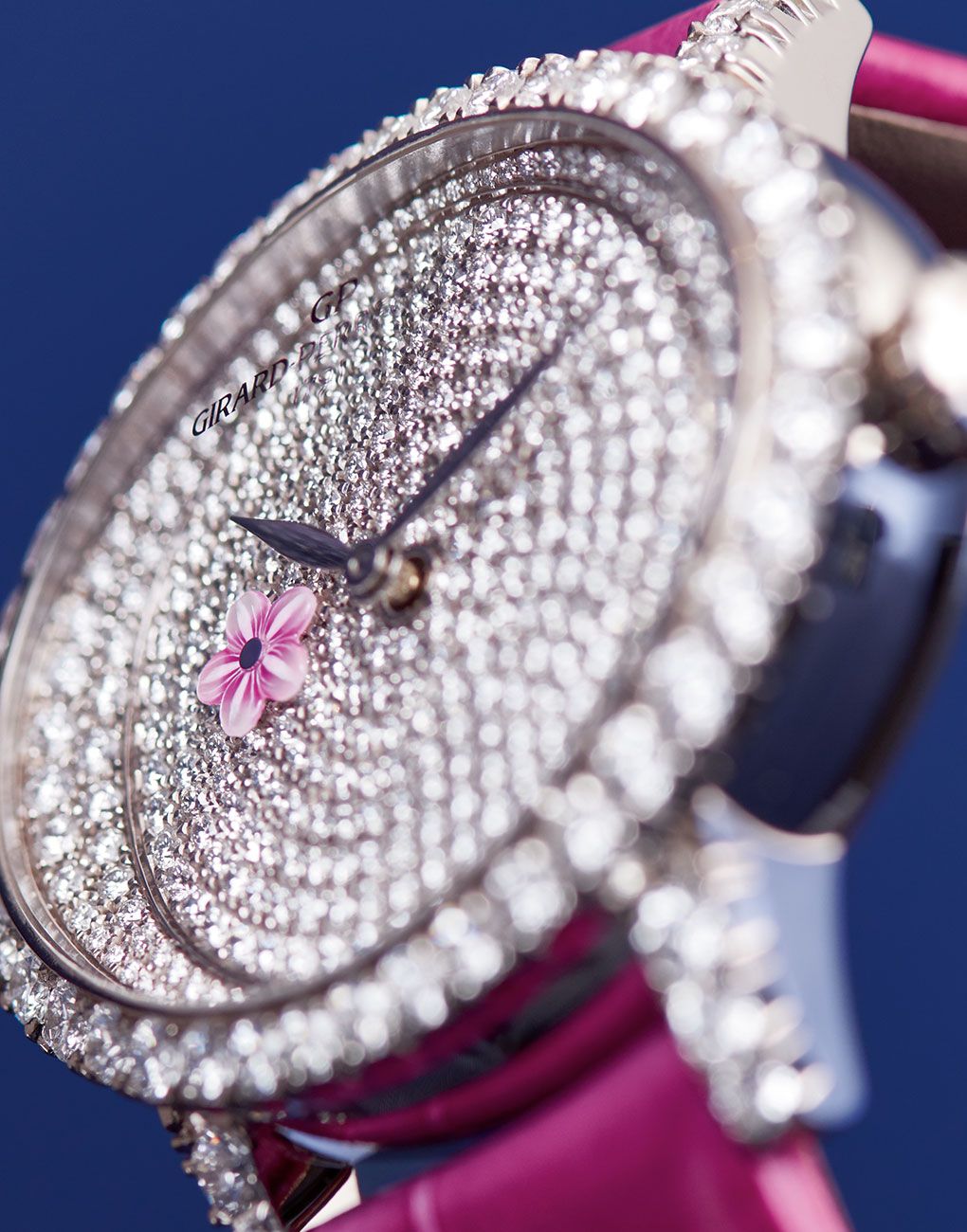
Types Of Precious Stones, Cuts, And Gem-Setting Techniques
Since the 19th century, diamonds have been the first choice for gem-setters, followed by other precious stones such as sapphires, rubies, and emeralds. Revered for their durability, exclusivity, and shine, diamonds have clearly carved a niche for themselves in horology. Today, they are available in two forms—natural diamonds and lab-grown diamonds—and are used to adorn different parts of the watch, such as the dial, bezel, lugs, and buckle. The second-hardest mineral on earth after diamonds, sapphires are used for their durability, colour, and uniqueness. Available in blue, pink, and yellow hues, they are placed on the dial, bezel, and crown. While the red rubies—softer than sapphires—are used to embellish the hour markers, crown, bezel, and dial, adding a pop of colour. Lastly, emeralds are used for their mesmerising green hue, and are rarer and more expensive than diamonds.
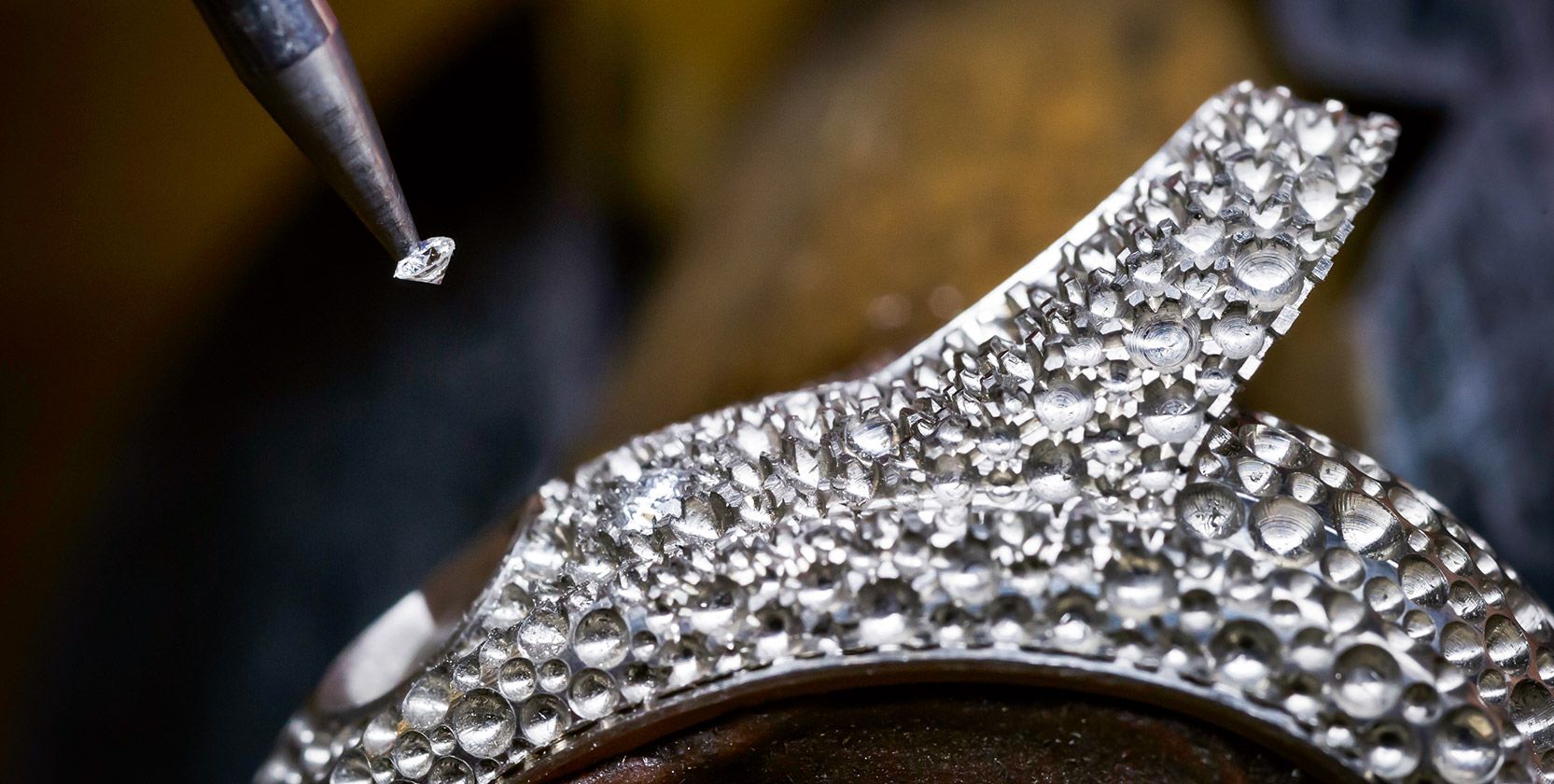
Based on the stone and the design on the watch, there are different cuts employed by gem-setters—round brilliant cut, baguette cut, and emerald cut. Out of these, the round brilliant cut is the most popular in watchmaking. In this, the diamond looks round from above, featuring 57 facets to maximise the number of times the light is reflected within it. Mostly, this cut is used for a round-dial watch. On the other hand, the stone with a baguette cut is long and rectangular in shape with 14 facets, hence it sparkles less as compared to the stone with a brilliant cut. These can be seen on a bezel, bracelet links, and also on hour markers. Lastly, an emerald cut is similar to the baguette cut, but here the corners are cut too, thus increasing the number of facets to 57—same as a brilliant cut. The rare Patek Philippe Nautilus 5719/10G is a good example, showcasing stones with all three cuts.
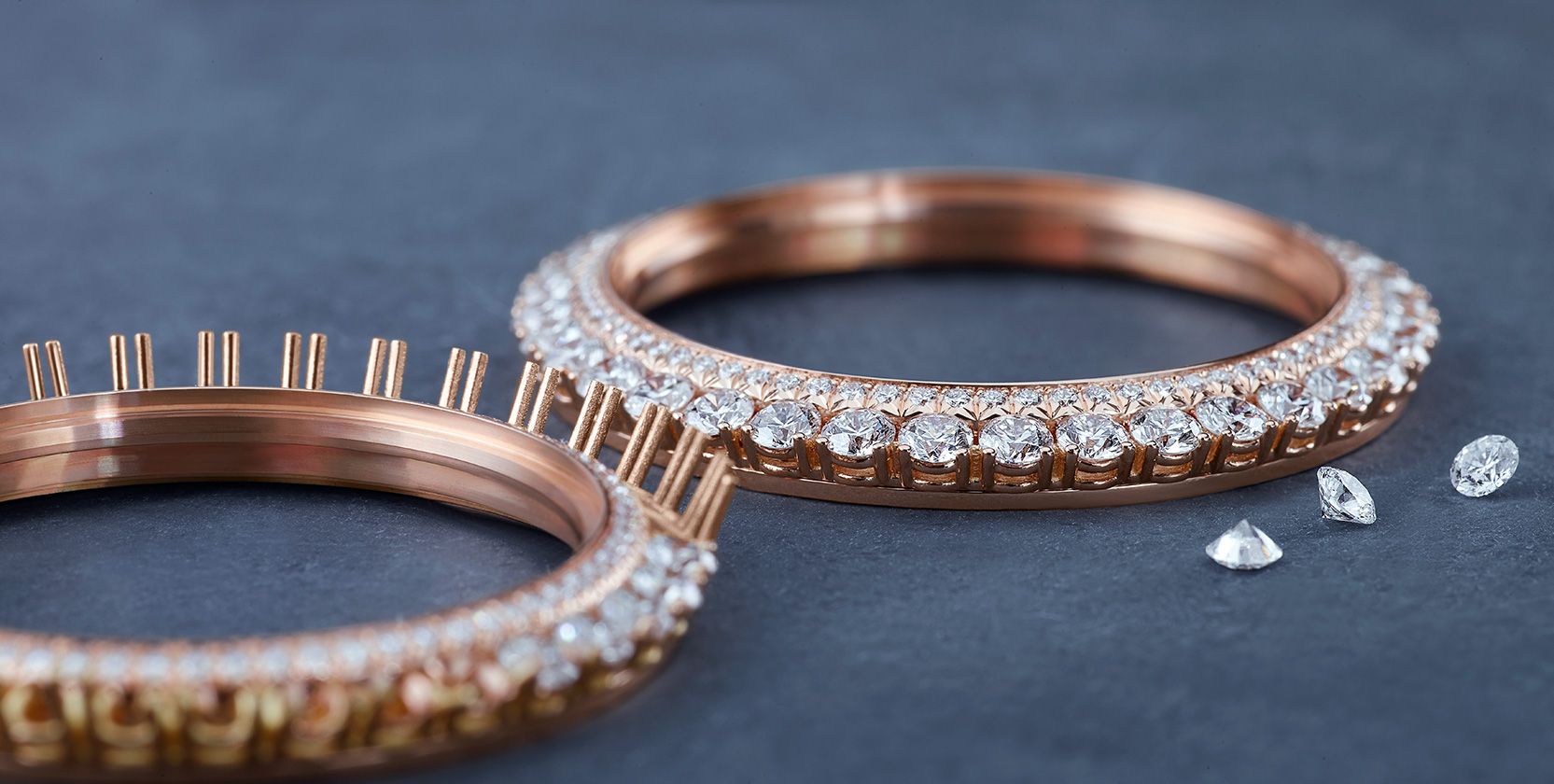
Now, based on diamonds or stones with varied cuts and where they’re fixed on the watch, different gem-setting techniques are devised—bezel setting, claw setting, pave setting, snow setting, and invisible setting. In a bezel setting, the stone is wrapped around the metal, thus securing it tightly in place, as seen on gem-set bezels or gem-set crowns. Similar to this is the claw setting, where the stone is held in place but by little claws. Pavé (French word for paved) setting is a more advanced technique of claw setting covering the dial, case, or bracelet of a watch. In this setting, the holes on the watch made to fix the stones are made to be uniform in size, depth, and are aligned perfectly to each other, whereas in snow setting, different sized stones are placed randomly, while also maintaining the design code. Lastly, in an invisible setting, the metal used in securing the stone is not visible to the wearer, hence the name.
The complex high-jewellery models exhibit meticulous craftsmanship and are created as a result of artisans working on them painstakingly for several hours and one of the categories displaying this artform beautifully is rainbow watches. Keep reading…
Chromatic Aesthetic: The World Of Bedazzling Rainbow Watches
If one wants to amp up their game further, one can always opt for the exclusive high-jewellery rainbow watches. A riot of colours on the wrist, these watches feature coloured gemstones on their bezel, while some models flaunt them on their dial, lugs, crown, or even the bracelet.
In 2012, Rolex launched two versions of the Rainbow Daytona—one in white gold and the other in yellow gold—paving the way for other watchmakers to also follow this trend—despite receiving mixed reactions from horophiles. Back then, an expensive and vibrant high-jewellery watch of this kind was unheard of and as time progressed, the industry saw more and more versions of rainbow watches.
In 2019, Zenith launched the Defy El Primero 21, a high-jewellery rainbow chronograph. Presented in an 18-karat rose-gold case, it features a rainbow bezel comprising 44 baguette-cut sapphires and hour markers. It is powered by the El Primero 9004 automatic movement, boasting a 1/100th of a second chronograph function. Other notable examples are the Parmigiani Fleurier Tonda 1950 Rainbow and the Hublot Big Bang Unico Rainbow King Gold, to name a few.
Men-Centric Brands Foraying Into The Jewelled Watch Space
It is interesting to note that brands such as Audemars Piguet, Panerai, Zenith, and Breitling that are often associated with crafting robust timepieces catering to men, are now occupying a big chunk of the ladies’ watch segment including jewelled watches. For instance, in 2023, Audemars Piguet released four pieces of the Snow-Set Royal Oak in two sizes—34mm and 37mm. Available in 18-karat white-gold or pink-gold cases, the models are entirely set with brilliant-cut diamonds, spread across the dial, bezel, crown, bracelet, and case. Quite a dazzling take on their iconic sports watch from 1972!
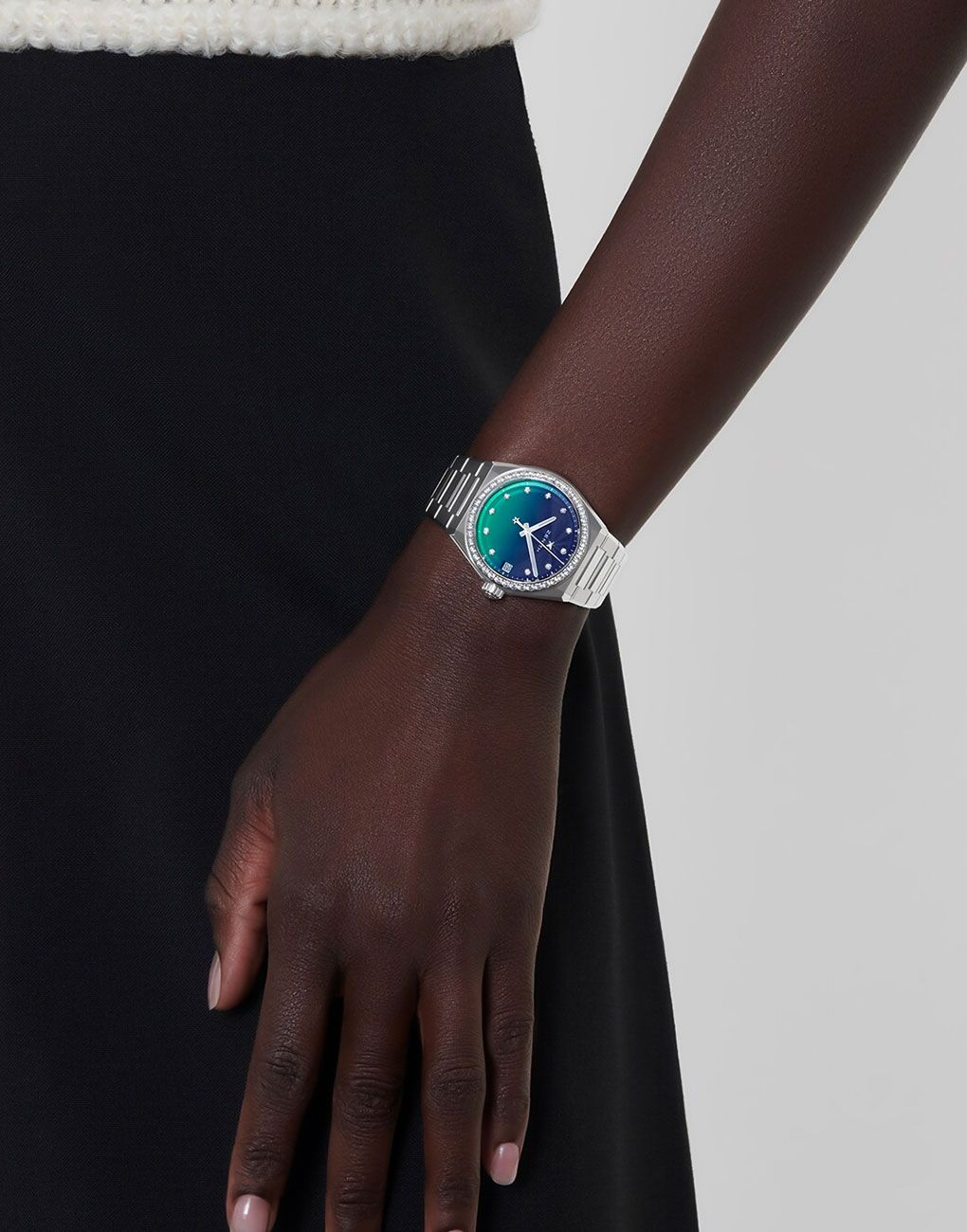
With a copyright on the name Pilot, Zenith’s aeronautical prowess is known far and wide throughout history. They were also the ones to create the first automatic chronograph movement, El Primero in 1969, capable of measuring 1/10th of a second. In 2020, they launched their first line of watches–featuring diamonds–dedicated entirely to women called the Defy Midnight.
Breitling is another Swiss brand that gained prominence for their aviation watches and best-selling Navitimer and Chronomat models. Today, they produce women’s watches set with diamonds and precious stones. For instance, their Chronomat South Sea Capsule collection features metallic and mother-of-pearl dials, diamond-set hour markers, and gem-set bezels. Panerai and Hublot, are some of the other examples showcasing sparkling watches—a refreshing change from their robust aesthetic.
Once confined to women alone, jewelled watches are now taking over the watchmaking industry by storm. And, with time, they will only grow bigger with more and more brands producing jewelled models, targeting both men and women. Afterall, diamonds are not just a girl’s best friend, right?


